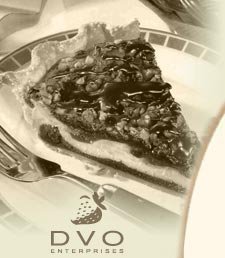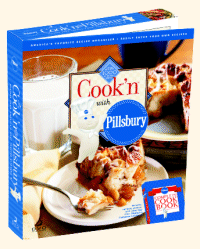
|
Never miss another recipe... Sign up for our free monthly newsletter today!
Subscribing will not result in more spam! I guarantee it! NEWSLETTER
• Current Issue• Newsletter Archive • Sign Up Now 
Cook'n with Betty Crocker 
Cook'n with Pillsbury 
Cook'n with a Taste of Home 
Cook'n in Italy 
Cook'n in Mexico |
 |
10-Thermometer Facts |
|
The recipe below is complete except for the ingredient amounts (_). Since the recipes offered at DVO.com are brand name recipes, our publisher partners require us to account for each recipe distributed. To get the entire recipe click Request Recipe below. This is the best 10-Thermometer Facts recipe on the web!! TYPES OF THERMOMETERS Several types of meat thermometers are available. It's important to choose the right one for the job! * A MEAT THERMOMETER (also called a meat and poultry thermometer or roast-yeast thermometer) is designed to be inserted and left in poultry or meat during cooking. The temperature gauge of this type of thermometer is protected by stainless steel, making it safe for use in the oven. This thermometer generally has both a temperature gauge and markings indicating doneness for various types of meat and poultry. We recommend looking at the temperature gauge to determine doneness. * An INSTANT-READ THERMOMETER (also called instant or rapid response thermometer) is designed to take an almost immediate temperature reading of the food being cooked (within one minute of insertion). This type of thermometer cannot be left in the oven. This thermometer has only a temperature gauge under a plastic cover; if left in the oven, this cover will melt and could damage the gauge, resulting in inaccurate temperature readings. WHERE DO I PUT THE THERMOMETER? * WHOLE CHICKEN OR TURKEY: Insert meat thermometer so tip is in the thickest part of the inside thigh muscle and does not touch bone. * WHOLE TURKEY BREAST: Insert meat thermometer so tip is in the thickest part of the breast muscle and does not touch bone. * BONELESS TURKEY BREAST: Insert meat thermometer so tip is in center of the thickest part of breast muscle. CHECKING FOR DONENESS WITHOUT A THERMOMETER Poultry doneness can be checked without a meat thermometer by using a sharp knife or fork. Here's how to tell when poultry is done: * WHOLE CHICKEN AND TURKEY: Juice is no longer pink when center of thigh is cut and drumstick (leg) moves easily when lifted or twisted. * WHOLE TURKEY BREAST: Juice is no longer pink when center is cut. * CUT-UP BROILER-FRYERS OR BONE-IN PIECES: Juice is no longer pink when centers of thickest pieces are cut. * BONELESS PIECES: Juice is no longer pink when centers of thickest pieces are cut. * SMALL PIECES (for stir-fry, fajitas or chicken tenders): Centers are no longer pink. * GROUND CHICKEN AND TURKEY: Meat is no longer pink. * POULTRY COOKED IN A SAUCE OR WITH OTHER INGREDIENTS: When checking for doneness, be sure you are checking that the juice of the poultry is no longer pink, not any other liquids being cooked with the poultry. All of our recipes include directions on how to tell when the dish is properly cooked, which may include time, temperature, appearance or any combination of these. From "Betty Crocker Best Chicken Cookbook." Text Copyright 1999 General Mills. Used with permission of the publisher, Wiley Publishing, Inc. All Rights Reserved. 02-How Do I Buy Great Chicken or Turkey? 03-Poultry Storage 04-How to Flatten Chicken Breasts 05-Cutting up a Whole Chicken 06-How to Bone a Chicken Breast 07-Get the Facts on Food Safety 08-Handling Food Safely 10-Thermometer Facts 11-Roasting Chicken and Turkey 12-Great Grilling 14-Poaching Chicken 15-How Much Poultry? 16-Microwaving Poultry 17-Use Your Favorites! 18-Moist Poultry Secrets 09-Check It Out! 13-Carving Poultry |
|
|
Affiliate Program | Privacy Policy | Other Resources | Contact Us
© 2008 DVO Enterprises, Inc. All rights reserved. Sales: 1-888-462-6656 |
